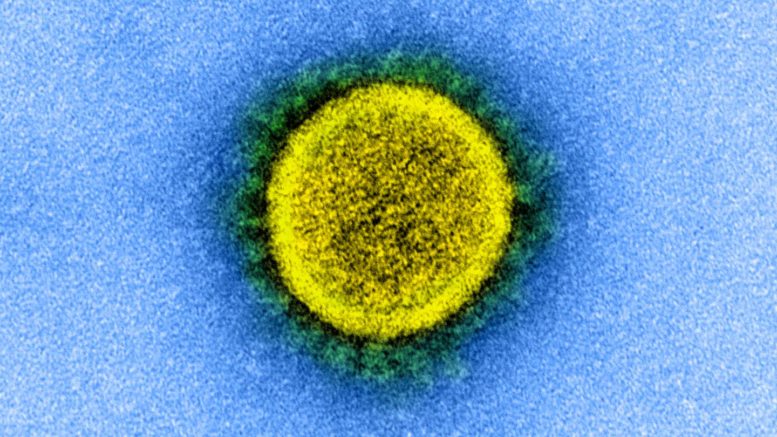Logue, et al. (2021) say that many individuals experience persistent symptoms and a decline in health-related quality of life (HRQoL) after coronavirus disease 2019 (COVID-19) illness. Existing studies have focused on hospitalized individuals 30 to 90 days after illness onset and have reported symptoms up to 110 days after illness. Longer-term sequelae in outpatients have not been well characterized.
A longitudinal prospective cohort of adults with laboratory-confirmed severe acute respiratory syndrome coronavirus 2 (SARS-CoV-2) infection was enrolled at the University of Washington with a concurrent cohort of healthy patients in a control group. Electronic informed consent was obtained, and the study was approved by the University of Washington human participants institutional review board. This study followed the Strengthening the Reporting of Observational Studies in Epidemiology (STROBE) reporting guideline. COVID-19 symptom data were obtained at the time of acute illness or retrospectively recounted at a 30-day enrollment visit. A total of 234 participants with COVID-19 were contacted between August and November 2020 to complete a single follow-up questionnaire between 3 and 9 months after illness onset. The researchers did not perform statistical tests for this descriptive analysis because of the small numbers in each subgroup. Data analysis was conducted in R version 4.0.2 (R Project for Statistical Computing).
A total of 177 of 234 participants (75.6%; mean [range] age, 48.0 [18-94] years; 101 [57.1%] women) with COVID-19 completed the survey. Overall, 11 (6.2%) were asymptomatic, 150 (84.7%) were outpatients with mild illness, and 16 (9.0%) had moderate or severe disease requiring hospitalization (Table). Hypertension was the most common comorbidity (23 [13.0%]). The follow-up survey was completed a median (range) of 169 (31-300) days after illness onset among participants with COVID-19 and 87 (71-144) days after enrollment among 21 patients in the control group. Among participants with COVID-19, persistent symptoms were reported by 17 of 64 patients (26.6%) aged 18 to 39 years, 25 of 83 patients (30.1%) aged 40 to 64 years, and 13 of 30 patients (43.3%) aged 65 years and older. Overall, 49 of 150 outpatients (32.7%), 5 of 16 hospitalized patients (31.3%), and 1 of 21 healthy participants (4.8%) in the control group reported at least 1 persistent symptom. Of 31 patients with hypertension or diabetes, 11 (35.5%) experienced ongoing symptoms.
The most common persistent symptoms were fatigue (24 of 177 patients [13.6%]) and loss of sense of smell or taste (24 patients [13.6%]). Overall, 23 patients (13.0%) reported other symptoms, including brain fog (4 [2.3%]). A total of 51 outpatients and hospitalized patients (30.7%) reported worse HRQoL compared with baseline vs 4 healthy participants and asymptomatic patients (12.5%); 14 patients (7.9%) reported negative impacts on at least 1 activity of daily living (ADL), the most common being household chores.
The researchers note, "In this cohort of individuals with COVID-19 who were followed up for as long as 9 months after illness, approximately 30% reported persistent symptoms. A unique aspect of our cohort is the high proportion of outpatients with mild disease. Persistent symptoms were reported by one-third of outpatients in our study, consistent with a previously reported study, in which 36% of outpatients had not returned to baseline health by 14 to 21 days following infection. However, this has not been previously described 9 months after infection. Consistent with existing literature, fatigue was the most commonly reported symptom. This occurred in 14% of individuals in this study, lower than the 53% to 71% reported in cohorts of hospitalized patients, likely reflecting the lower acuity of illness in our cohort. Furthermore, impairment in HRQoL has previously been reported among hospitalized patients who have recovered from COVID-19; we found 29% of outpatients reported worsened HRQoL. Notably, 14 participants, including 9 non-hospitalized individuals, reported negative impacts on ADLs after infection. With 57.8 million cases worldwide, even a small incidence of long-term debility could have enormous health and economic consequences."
Reference: Logue JK, et al. Sequelae in Adults at 6 Months After COVID-19 Infection. JAMA Netw Open. 2021;4(2):e210830. doi:10.1001/jamanetworkopen.2021.0830

Be the first to comment on "Sequelae in Adults at Six Months After COVID-19 Infection"